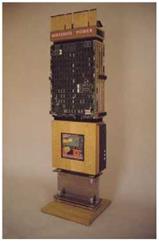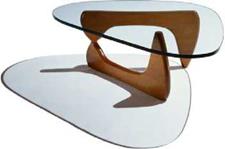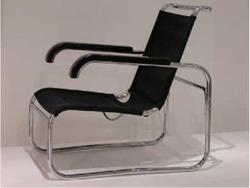Furnishings that utilize two or more geometric systems, such as curvilinear and orthogonal, or two or more distinct materials such as stone and wood in one piece are considered composite. The bent, welded, and chromed tubular steel frame in Marcel Breuer’s Model B32 (Figure 3.14) is distinct from its black leather seat pan and backrest. Nintendo Power is a display and storage unit organizing the media and hardware for Nintendo’s original 8-bit gaming system. The geometry is entirely orthogonal, but the design is a composite of various materials and components with iconic references (Figure 3.15). Isamu Noguchi’s coffee table is a composite of biomorphic-shaped wood supports and a curvilinear glass top (Figure 3.16). The shape of the glass top enables versatility for space-planning purposes.
|
|
|
|
|
|






